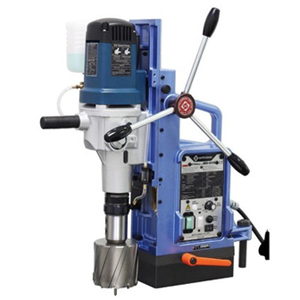Schedule a Call Back
Rising demand and material limits could trigger supply crunch for OEMs
 Articles
Articles- Oct 31,25

2025 has been a year of uncertainty for both industrial automation OEMs and their customers. A cataclysmic shift in US trade policy has created a market wide mentality of ‘wait and see’. For automation OEMs, this has manifested broadly as delayed orders from customers rather than outright cancellations. As we approach 2026, these delays could coalesce as a ‘pop’ in orders. This, coupled with the reduction of interest rates expected through the rest of the year, has created conditions for a potentially strong rebound in the first half of 2026.
While this is undoubtedly good news for many, there is another force bubbling up that could make fulfilling orders more difficult. As trade tensions rise, China has positioned itself for negotiations with the US by leveraging its supply of industry-critical raw materials. In October, China expanded the export restrictions on its rare earth material. If a strong rebound in orders occurs, these restrictions could place significant stress on the supply chains of industrial automation OEMs.
The ripple effects of the last supply chain crunch
Following the Covid-19 shutdown, automation OEMs experienced a surge in orders across 2021 and 2022 as pent-up demand, low interest rates, and a high level of government spending fuelled investment. During this period, manufacturers struggled to keep up with orders and supply shortages began snowballing. Lead times for a multitude of components surged, which led to significant over-ordering by customers looking to secure the inventory necessary to produce their machinery or other end product. The chart below displays the level of stress the global supply chain was under at this time, and how it has fared since then.
Figure 1: Supply chain stress reached a peak in 2021. While it has maintained low levels through September 2025, it is likely to increase into 2026.
Source: Federal Reserve Bank of New York, Global Supply Chain Pressure Index
The ripple effects of this period are still being felt. Across 2024 and into 2025, many component vendors experienced extremely low levels of new orders. It became apparent that customers and channel partners had over-stocked their inventories during the supply chain crisis. They needed time to return them to normal levels before placing new orders. During this period, many industrial automation component vendors experienced double-digit declines in sales. New orders have only begun to resume for these vendors more recently, indicating inventory levels across sales channels are starting to normalise.
A rare earth material shortage could coincide with surging order volumes
As part of the restriction, manufacturers utilising Chinese rare earth material in their manufacturing processes will now have to apply and be awarded approval to purchase from the country. The materials on the restriction list can be found in many different industrial automation products. The restriction has already received a lot of press concerning its impact on battery and chip manufacturing. One of the greatest supply concerns for automation equipment manufacturers will centre around the availability of rare earth magnets.
Rare earth material is often combined with other more common magnetic material to improve performance. One prominent example of a product which requires rare earth magnets is permanent magnet motors. These types of motors are heavily utilised across many industrial automation applications, including robotics, machine tools, and general motion control.
In the last few months, we’ve begun hearing instances of motor manufacturers struggling to secure a supply of rare earth materials. However, given the slower-than-average year from an order perspective, it has yet to manifest as a significant shortage of motors. However, this situation could change should orders begin to ramp-up as expected in 2026.
There is a likely scenario where the delayed orders in 2025 comes to fruition in 2026, resulting in a surge of orders. If this occurs, it is likely to stress supply chains for products which heavily utilise rare earth material. With inventory levels of channel partners only recently returning to ‘normal’, it is likely this will cause more supply chain issues in 2026.
The impact is likely to be less intense than in 2021
While this scenario is concerning, it should be noted it’s unlikely that supply chain issues will be as severe as at the height of shortages in 2021. Firstly, whereas the shortage in 2021 was broader, it is a narrower group of products at risk now. Additionally, the level of demand seen in 2021 is unlikely in 2026. There remains a lot of uncertainty surrounding the macroeconomy, which is likely to continue to suppress demand into 2026. However, as tariffs become more normalised and borrowing conditions improve, this is less of a factor.
Heading into 2026 it will be important to evaluate how exposed your supply chain is to a shortage of rare earth material. During the last supply shortage, significant market share movements occurred in nearly every market we covered. Lead time becomes critical during these periods and if companies are unable to secure key components necessary to produce, those with adequate inventory are likely to gain market share.
About the author:
Blake Griffin is a Research Manager at Interact Analysis, specialising in automation technology and capital equipment markets. He leads research on motors, drives, and precision motion equipment, focusing on developing robust market models and uncovering insights from complex datasets. Blake’s expertise includes forecasting, supplier and OEM analysis, and tracking global industry trends.
Related Stories

Why is Workmen Compensation Insurance Essential for Both Employers and Employees?
Workplace risks are an unavoidable reality across India’s diverse industries like construction, manufacturing, logistics, housekeeping, hospitality and more. Even with strong safety protocols, acc..
Read more
3D Printing Strengthens the Foundations of Smart Manufacturing
The global 3D printing market was estimated at $30.55 billion in 2025 and is projected to reach $168.93 billion by 2033, growing at a compound annual growth rate of 23.9 per cent from 2026 to 2033.
Read more
IMTEX Forming 2026: Charting the Next Chapter of India’s Metal Forming Ecosystem
IMTEX Forming 2026, Asia’s largest metal forming and manufacturing technology exhibition, is set to return to Bengaluru from 21–25 January 2026.
Read moreRelated Products

Digital Colony Counter
Rising Sun Enterprises supplies digital colony counter.
Robotic Welding SPM
Primo Automation Systems Pvt. Ltd. manufactures, supplies and exports robotic welding SPM.

Heat Exchanger Scale Removal Compound -hesr-300
Hi There!
Now get regular updates from IPF Magazine on WhatsApp!
Click on link below, message us with a simple hi, and SAVE our number
You will have subscribed to our Industrial News on Whatsapp! Enjoy












